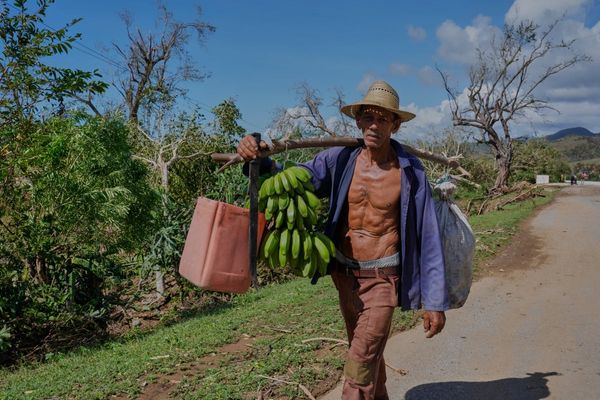
St Peter’s Pool, a wide bay lining the isthmus that connects mainland Orkney to its Deerness peninsula, doesn’t look like much to shout about. In comparison with Dingieshowe, the glamorous, silk-sand beach it backs on to, it presents as a muddy-looking flat made untidy with worm casts. I’ve never paid it much attention before.
But a few days ago, I joined three marine conservationists as they donned masks and wetsuits, and waded out into its shallows at 7am. They – Dr Esther Thomsen, Lyle Boyle and Nathan Tsang – are spending several weeks in our islands, snorkelling every day as part of the ambitious £2.4m Restoration Forth initiative that will collect Orkney seagrass seeds for relocation to the more damaged Firth of Forth, 200 miles to the south, to help its ailing ecosystem.

As the water rose over our knees, we came upon a hard border where pale rippled sand met dense vegetation, the meadow’s sharp edge. From above, in the dull light of a dreich summer day, it appeared a thick mat of sludge green. But, following Lyle’s lead, I folded forward, flopped on to my belly, and submerged my face and head.
Below the surface was a vision of verdant growth, seagrass undulating gently in the waves. I spotted a starfish barely bigger than my thumbnail, clinging to a blade for dear life, the fleshy cushion of a sea squirt. A tiny, translucent shrimp scooted by. A whole world in miniature, illuminated in shimmering, silvering light – a sanctuary for juvenile fish, hermit crabs and other small sea creatures.

Esther, Lyle and Nathan drifted serenely over the seagrass, scanning for reproductive shoots. These are brighter, greener blades that split to reveal ripening seeds like peas in a pod. Harvesting them is easy enough: grasp the shoot with a gloved hand, follow it down to where it branches and pluck it cleanly away. It doesn’t harm a plant; it simply accelerates what happens naturally. A patch of meadow this size – 50 hectares or so – will produce many millions of seeds each year so it can spare a few for a poor relative down south.
Despite my suit, I’m soon shivering. We head back to shore. In the time that it took me to grab a handful, Esther had filled her net bag. Still, every little helps.
• Country diary is on Twitter at @gdncountrydiary







